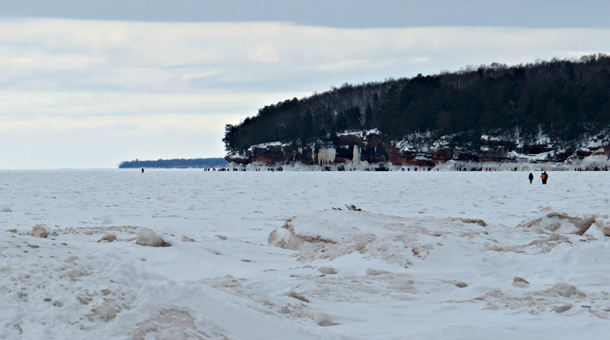
Harsh Cold Winter Toll on Fish
MADISON – Weather – Deep ice on shallow lakes is likely to cause issues of winter kill of fish. With ice 3 feet deep still covering many lakes in northern Wisconsin and yet more snow delivered last week, Wisconsin State fish biologists are expecting an increase in fish kills due to low oxygen levels in some shallower lakes.
As a result, anglers and lakeshore property owners could see an increased number of fish littering shorelines throughout Wisconsin this spring when the ice finally melts.
“We expect some winterkill every year, but we’re likely to see more due to heavy snow and the long ice cover,” says Paul Cunningham, Department of Natural Resources fisheries ecologist.
“Shallow lakes with large amounts of aquatic vegetation and mucky bottoms are prone to this problem. They have much lower oxygen capacity to begin with, and that oxygen is consumed as the plants decay, leaving little for fish and other aquatic life as the ice cover prevents oxygen from the atmosphere from entering the lakes.”
Winterkill is a natural process occurring when fish don’t have enough oxygen.
In ice capped winters, most oxygen in the water comes from aquatic plants. However, when the ice and snow cover is thick, plants cannot get the sunlight needed, and instead of producing oxygen, they die back and decompose. Last year, DNR documented 18 fish kills caused by low dissolved oxygen levels in winter.
Cunningham says it is rare for lakes to experience total winterkill. Tributaries or springs where oxygen supplies are better are usually temporarily sought out by some fish. “For some waters, partial winterkill is a natural, beneficial process that results in increased growth rates and improved size structure of the survivors and a better fishery all together”.
Cunningham added, “On more shallow lakes with excessive algae blooms, winterkill can have negative impacts to anglers because the majority of game fish die, and rough fish like black bullheads and carp survive, making it a challenge to restore and maintain game fish populations in these lakes.”
“Fortunately, usually enough fish survive, either in the lake or in connecting waters, to repopulate the lake in a couple of years. Only for extreme die-offs is fish restocking necessary”, Cunningham says.
Rehabilitation of winterkill lakes typically involves restocking of species such as northern pike, largemouth bass, yellow perch, pumpkinseed and bluegill. After completing fish kill investigations, local fisheries biologists make the decision to request fish for restocking in the extreme cases of severe winterkill.
DNR has contingency plans to increase production of large-mouth bass and northern pike that may be needed for restocking lakes that are severely impacted by winterkill this year.
What to do if people see a fish kill While the lack of oxygen normally kills fish in later winter, the fish may not be noticed until a month after the ice has melted from lakes.
The dead fish are preserved by the cold water under the ice, but start decomposing as the water warms and the bloated fish float to the shore.
People witnessing a fish kill are asked to note the water body, fish species and approximate number of dead or dying fish and contact their local fisheries biologist or call the DNR TIP line at 1-800-TIP-WDNR, 1-800-847-9367.
Do not collect fish samples from a suspected winterkill fish kill.
“They are several things we can look for to distinguish a winter kill,” says Cunningham. “One sign is that the dead fish may appear fuzzy from a fungus infection, which is normal in winterkills. Another sign is the strong smell of sulfur dioxide, which smells like rotten eggs.” Other distinguishing factors include the species of fish affected and the rate of decomposition.
“With winterkills, fish may be partially decomposed, depending on when they died,” says Sue Marcquenski, DNR fish health specialist. “And if the dead fish are comprised of all the different species in the lake at the time of ice out, winterkill is the likely cause.” If dying fish or fish in distress are observed this spring, the cause may be different than winterkill. If dying fish are observed, please contact local fisheries biologists or the DNR TIP line and indicate fish are actively dying (not a winterkill). – See more at: http://www.thefishingwire.com/story/316031#sthash.1c0bolRg.dpuf










